Watering your vegetable garden is an important part of keeping it in good shape and ensuring that you get a large harvest. Knowing when to water your plants is key, as too much or too little can harm your crops. With proper maintenance and care, you should be able to keep your vegetables happy all season long.
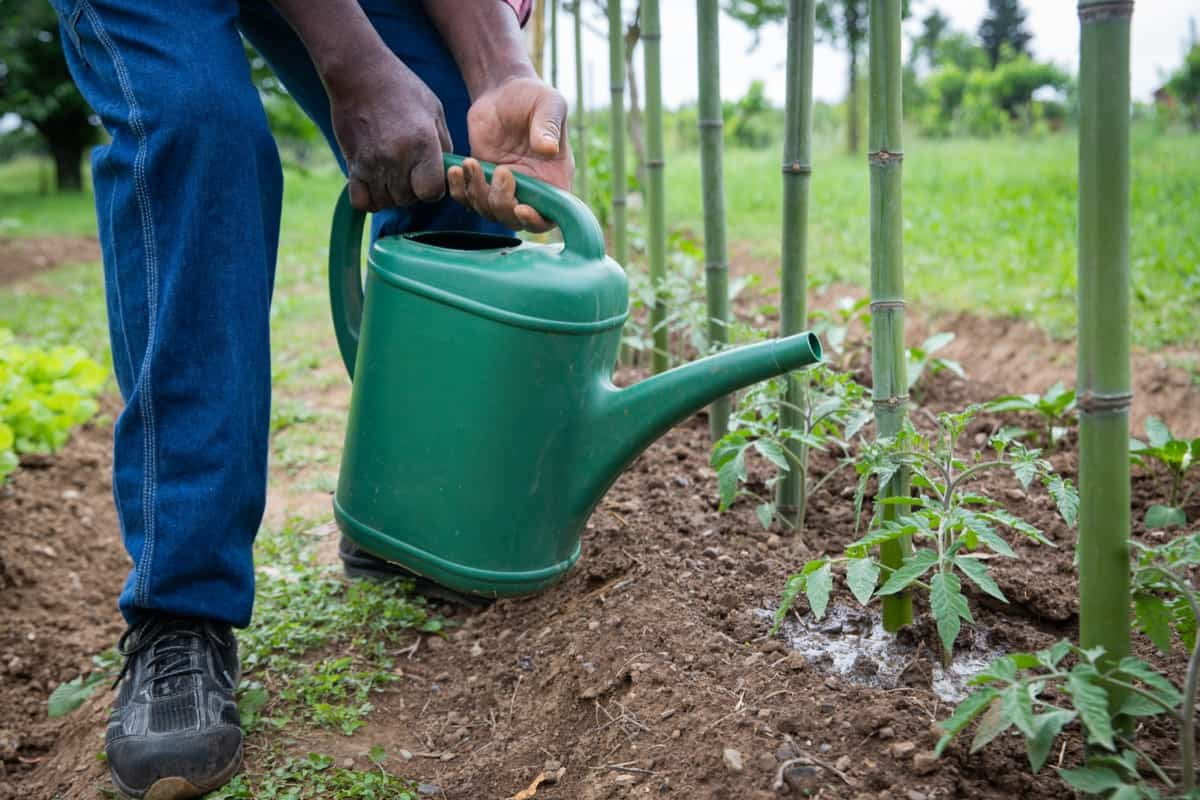
Watering your vegetable garden is key to maintaining healthy, productive plants. Be sure to use mulch around the base of plants to reduce water evaporation, keep an eye on weather conditions and monitor the soil moisture regularly for optimal watering results. You should have a thriving vegetable garden in no time with proper management.
When to Water Your Vegetable Garden
Importance of Water for Your Garden
Watering your garden is important for several reasons. It helps your plants to grow and develop properly. It keeps them healthy by providing the moisture they need to stay hydrated. It helps to control weeds and pests by keeping the soil moist and preventing them from taking hold. Finally, watering also helps them get the nutrients they need from the soil. If you don’t water your garden, your plants will eventually die. Without water, they will not get the nutrients they need from the soil and will eventually wither and die.
How Much Water Does a Vegetable Garden Need?
Vegetable gardens need 1-2 inches of water per week. However, this can change depending on your growing vegetable type, climate, and weather conditions. For example, gardens may need more water in hot climates to prevent wilting and drying out, while they may need less water in cooler climates.
In case you missed it: Best Drought-Tolerant Garden Plants Which Can Survive with Minimal Water
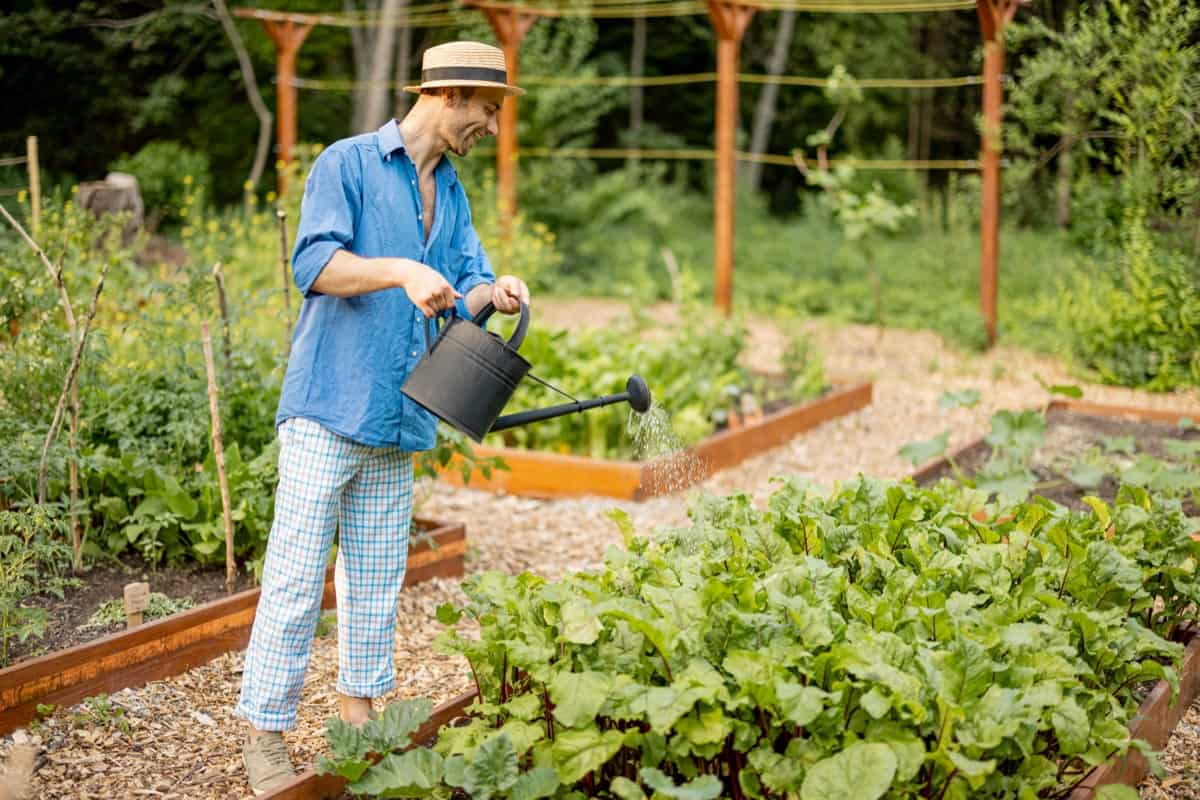
You should watch your garden and see how it responds to the amount of water you give it. If your plants are wilting or the leaves are drooping, they may need more water. On the other hand, if the plant leaves are yellowing or falling off, they may be getting too much water. If you’re unsure how much water your garden needs, it’s always best to water too little rather than too much.
Overwatering
Water is essential for any garden, but too much water can be as damaging as too little.
When water seeps into the soil, it can compact the particles, making it difficult for roots to penetrate and breathe. Root rot disease thrives in wet, humid conditions and can quickly kill your plants.
Several fungal diseases, like powdery mildew and black spot, love damp conditions and will quickly take over if your plants are overwatered. If your garden has poor drainage, overwatering can lead to standing water which drowns roots and invites pests. To avoid these problems, ensure you only water when necessary and check the soil before watering to see if it’s moist.
When to Water Your Vegetable Garden?
Water your vegetable garden early or later in the evening to avoid evaporation. Check the soil before watering to see if it is dry or moist. This will give the plants time to absorb the water before the day’s heat sets in. Watering in the evening is also an option, but do it early enough so the leaves have time to dry before nightfall.
In case you missed it: 11 Self-watering Container Gardening Ideas: DIY Steps with 5 Gallon Buckets
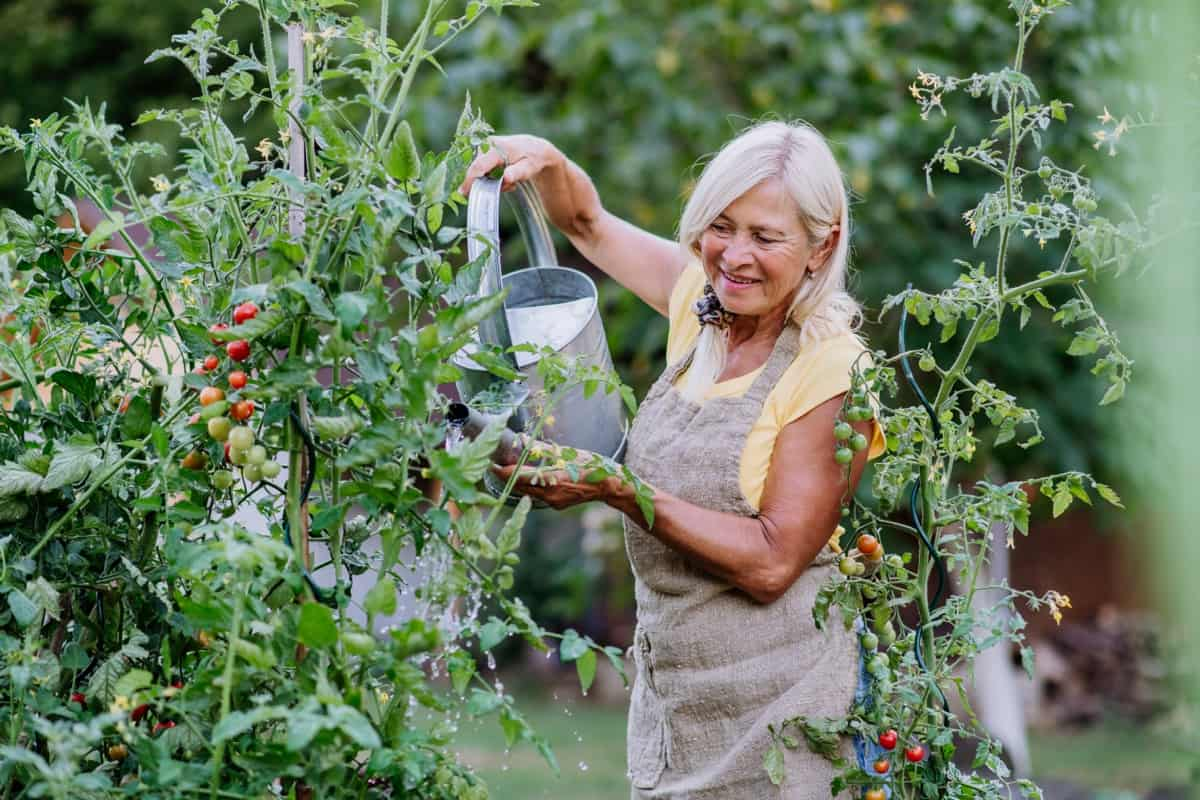
How to Water A Vegetable Garden Properly?
Watering your vegetable garden is one of the most important aspects of gardening. Without proper watering, your plants cannot grow and thrive. You should consider a few things when watering your garden, such as how often to water, how much water to use, and what type to use. Watering frequency will depend on a few factors, such as the type of plant, the size of the plant, the weather, and the soil. Generally, most vegetables need 1-2 inches of water per week.
Water early in the day so the leaves have time to dry before nightfall. This will help prevent fungal diseases. When watering your garden, applying enough water to penetrate 6-8 inches into the soil is important. Use a garden hose with a nozzle attachment or a soaker hose to slowly and evenly apply water to your garden bed. It is best to use rainwater or filtered water for your garden. You can let tap water sit for 24 hours before using it on your plants to evaporate the chlorine.
Methods for Watering Vegetable Plants
A soaker hose and drip irrigation system will allow water to seep slowly into the ground, getting the roots of your plants wet without making the leaves soggy. If you don’t have either of those, another option is to use a sprinkler on a low setting for about 30 minutes. Ensure to water in the morning so the plants have time to dry off before nightfall.
Soaker Hoses
A soaker hose is the best option when watering your vegetable garden. Soaker hoses can be a great option for delivering steady water to your plants. Ensure the hose is placed on top of the soil, not underneath. This will ensure that the water seeps through to the roots of the plants. Be sure to turn the water off at the end of the watering session.
Otherwise, water will continue to seep out and may cause problems with mold or mildew. When first using a soaker hose, test it out in an area that won’t be damaged if there’s any leakage. Once you’re confident there aren’t any leaks, you can move on to watering your plants.
In case you missed it: When and How to Fertilize Your Vegetable Garden

Drip Irrigation
Drip irrigation is the best way to keep your vegetable garden watered without spending hours daily hand watering. Drip irrigation systems can be set up to water your garden on a schedule, so you never have to worry about forgetting to water your plants. When setting up a drip irrigation system for your vegetable garden, you should consider a few things. How much water your plants will need will depend on the plant type you are growing, your climate, and the time of year.
Once you know how much water your plants need, you can design your drip irrigation system accordingly. Next, you must choose the right drip irrigation system for your needs. Many different types of drip irrigation systems are available on the market, so it’s important to research and find the one that will work best for your garden. Once you have chosen a drip irrigation system, it’s important to install it properly. Make sure all of the connections are tight and that there are no leaks. Test the system before you plant your garden to ensure it works correctly.
DIY Plant Watering Devices
If you’re away from home for over a day or two, your vegetable garden will need automatic watering. You can use several devices to water your garden, each with advantages and disadvantages. One option is to use an irrigation system. These systems can be manual or automatic, allowing you to schedule when your plants will be watered. However, installing them can be expensive and require regular maintenance to keep them working properly.
Finally, you can water your plants by hand. This is the most labor-intensive option but also the most flexible. You can water as often or as little as you like and easily target specific plants that need more water than others. However, hand-watering can be time-consuming, and forgetting to water your plants is easy if you’re busy with other tasks.
In case you missed it: 47 Key Rules for Effective Vegetable Garden Management: From Planning to Reducing Cost
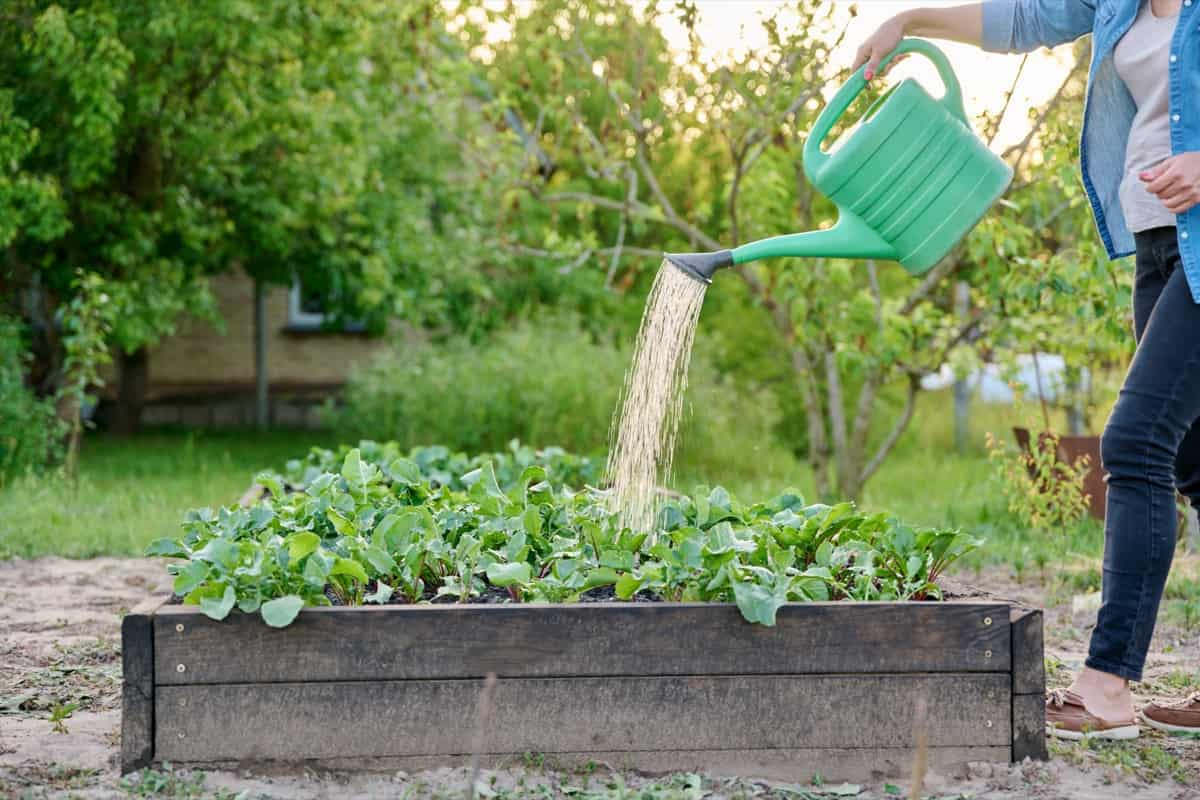
Use Sprinklers
A sprinkler is best if you need to water your vegetable garden quickly. You’ll want to ensure the sprinkler is set up properly so that all plants in your garden get equal water. Once the sprinkler is set up, turn it on and let it run for about 30 minutes. This should give your plants enough water to last until their next watering.
Use a Hose Timer
If you’re not home to water your garden during the day, use a hose timer to automate the process. This way, you can set it and forget it, knowing your plants will get the hydration they need.
Common Vegetables and Their Watering Needs
Leafy Vegetables
Watering leafy vegetables is a bit different than watering other types of plants. These plants need more water, and they need it to be applied more frequently. The best way to water leafy vegetables is with a drip irrigation system. This type of system will apply water directly to the roots of the plants, and it will do so regularly.
This is the perfect way to ensure that your leafy vegetables get the water they need without getting too much or too little. Most leafy vegetables require about 1 inch of water per week. Check the soil before watering, as some leafy vegetables are more sensitive to over-watering than others. Water early in the day so the leaves have time to dry before nightfall.
Root Vegetables
While the watering needs of vegetables can vary depending on the type of plant, most root vegetables need to be watered deeply and less frequently. This means you should allow the soil to dry out somewhat between watering. If the soil’s top inch is dry, it’s time to water. When you do water, make sure to saturate the entire root zone. Once the roots have been watered, let the soil drain before adding more water. Watering needs for root vegetables vary depending on the type of vegetable. For example, carrots need less water than beets. In general, root vegetables need about 1 inch of water per week.
Fruit-bearing Vegetables
Watermelons, cucumbers, and squash are all fruit-bearing vegetables that require a lot of water to produce fruits. These vegetables should be watered deeply and regularly during the growing season. Watermelons and cucumbers need about 1 inch of water per week, while squash needs a little less at about 3/4 inch per week.
Cool-season Plants for Pollinators: Vegetables, Flowers, Fruits, Shrubs, and Herbs
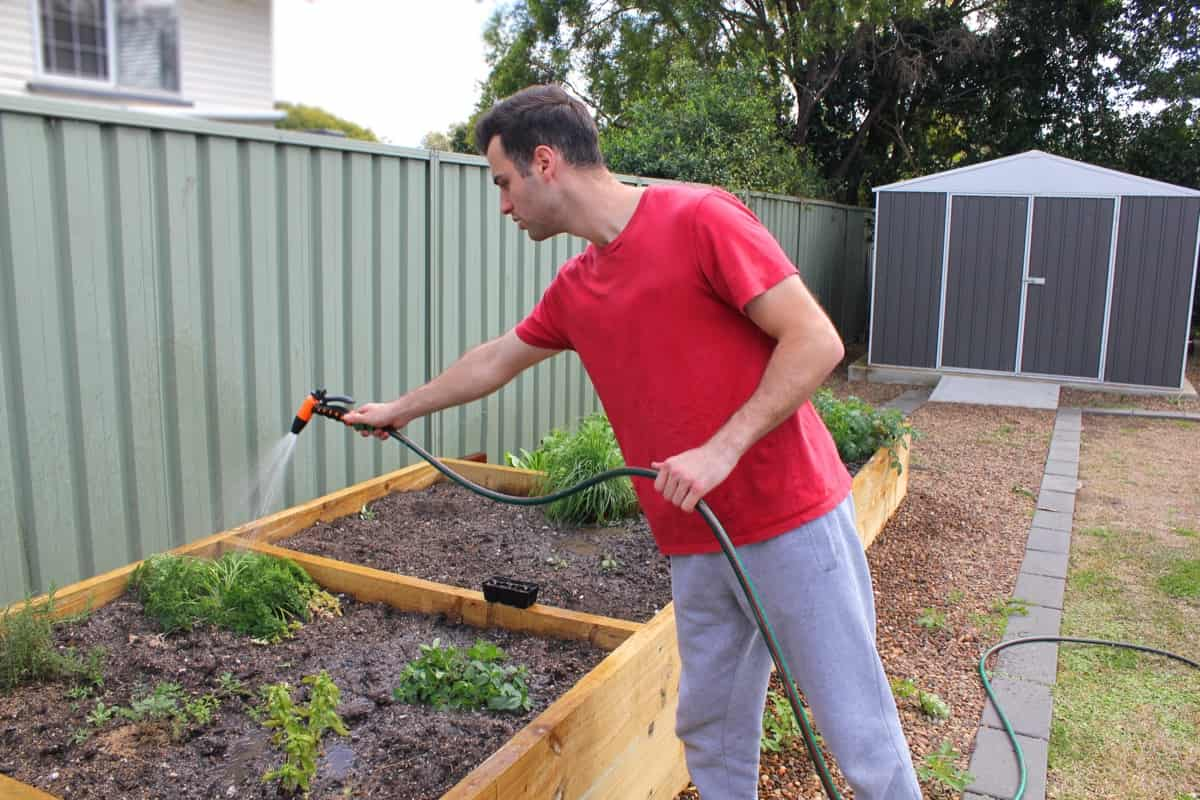
Most vegetables need at least 1 inch of water per week. Fruit-bearing vegetables generally require more water than other types of vegetables. This is because they produce fruits or vegetables that use water. Water fruit-bearing vegetables 2 to 3 times per week or as needed to keep the soil moist but not soggy.
Conclusion
Watering deeply and less frequently is better for plant health than watering shallowly and more often. Check your soil regularly to see if it is dry or moist before watering. Watering your vegetable garden is essential to keep it healthy and productive. The key is to water consistently, ensuring the soil is moist but not saturated. Depending on your climate, you may need to water more or less frequently than other gardeners in similar conditions. With a bit of research and some trial and error, you’ll soon get a feel for what works best for your vegetable garden and how much watering it needs so it will thrive.
- Broccoli Seed Germination and Selection
- Asparagus Seed Germination and Variety Selection
- Seasonal Flower Gardening: Best Practices for Spring, Summer, Fall, and Winter
- How to Grow Hibiscus from Flower
- Plantation Ideas for Home Decoration: A Beginners Guide
- Flower Garden Designs and Layouts for Beginners
- Planting and Spacing Techniques in Papaya: A Beginner’s Guide
- Growing Gold: Essential Techniques for Planting Pineapples
- How to Make Kalanchoe Plant Bushy: Home Remedies and Solutions
- 11 Reasons Why Your Gardenia is Not Blooming: Home Remedies and Solutions
- Eco Elegance: The Guide to Designing a Drought-Tolerant Landscape
- Gardening on a Slope: Strategies for Hillside Landscaping
- Nourish and Flourish: Top Organic Mulches for Thriving House Plants
- Everything You Want to Know about Indian Mogra Flower: Discover Uses and Growing
- Green Thumb Success: Expert Tips for Cultivating Greenhouse Pumpkins All Year Round
- Maximize Growth & Flavor: The Ultimate Guide to Companion Planting in Herb Gardens
- How to Control Rhododendron Problems Naturally: Home Remedies and Organic Ways to Fix Them
- Natural Magic: The Remarkable Benefits of Cinnamon for Plants
- Best Steps to Revive Dying Tulip with Natural and Organic Treatment
- 10 Reasons Why Your Angel Trumpet is Not Blooming: Remedies and Treatment
- How to Fix Periwinkle Leaf and Flower-Related Problems: Natural Remedies and Solutions
- How to Fix Zinnias Leaf and Flower Problems: Discover Natural and Home Remedies
- Organic Steps to Induce Lemon Tree Flowers: A Comprehensive Guide
- Bloom Booster: Crafting the Perfect Homemade Bougainvillea Fertilizer
- Optimizing Growth: A Guide to Applying NPK Fertilizer for Potted Plants
- 10 Best Homemade Fertilizers for Rubber Plant: DIY Recipes and Application Method
- How to Boost Female Pumpkin Flowers: Effective Steps for More Flowers and High Yields
- Transform Your Indoor Garden: Top Benefits of Pink Salt for Houseplants
- 10 Best Homemade Fertilizers for Peacock Plants (Calathea): Easy DIY Guide
- Unlock Blooms: 9 Reasons Why Your Potted Chrysanthemum is Not Blooming
- 8 Reasons Why Your Potted Hibiscus is Not Blooming: Fix it with Simple Solutions
- Unlock Blooms: 9 Key Reasons Your Potted Frangipani Won’t Flower
- 10 Reasons Why Is My Ice Plant Not Blooming: Remedies and Treatment
- 10 Reasons Why My Potted Hydrangea Not Blooming: Treatment and Remedies
- 10 Reasons Why is My Wisteria Not Blooming: Remedies and Treatment
- 10 Reasons Why is My Goldfish Plant Not Blooming: Remedies and Treatment